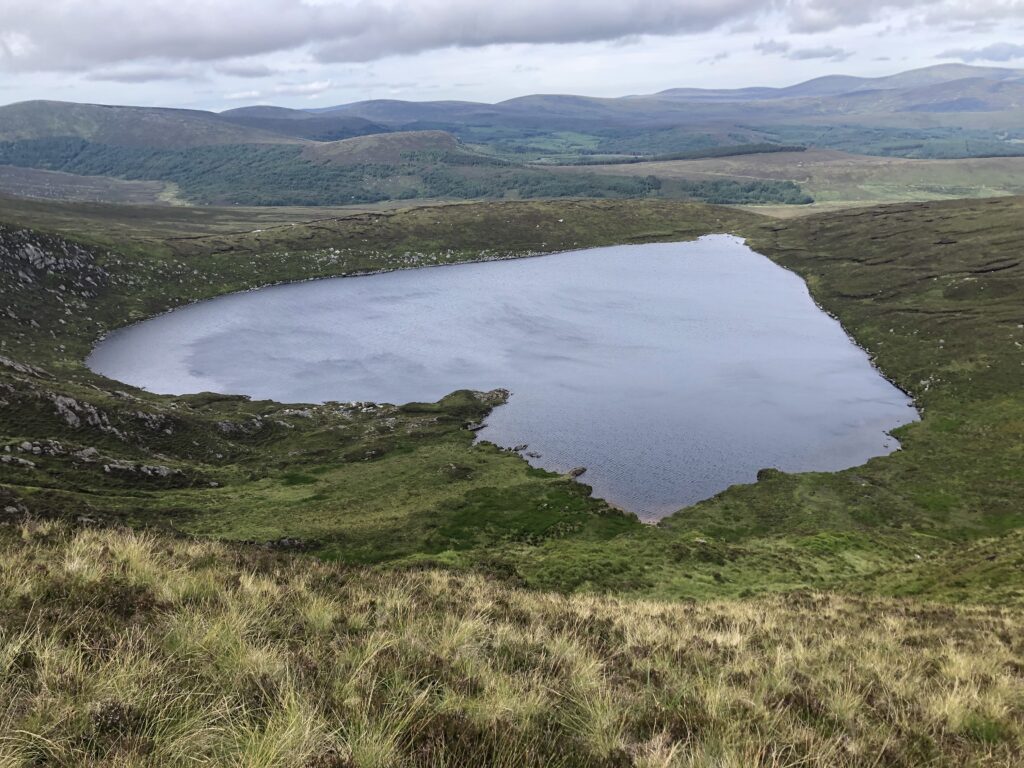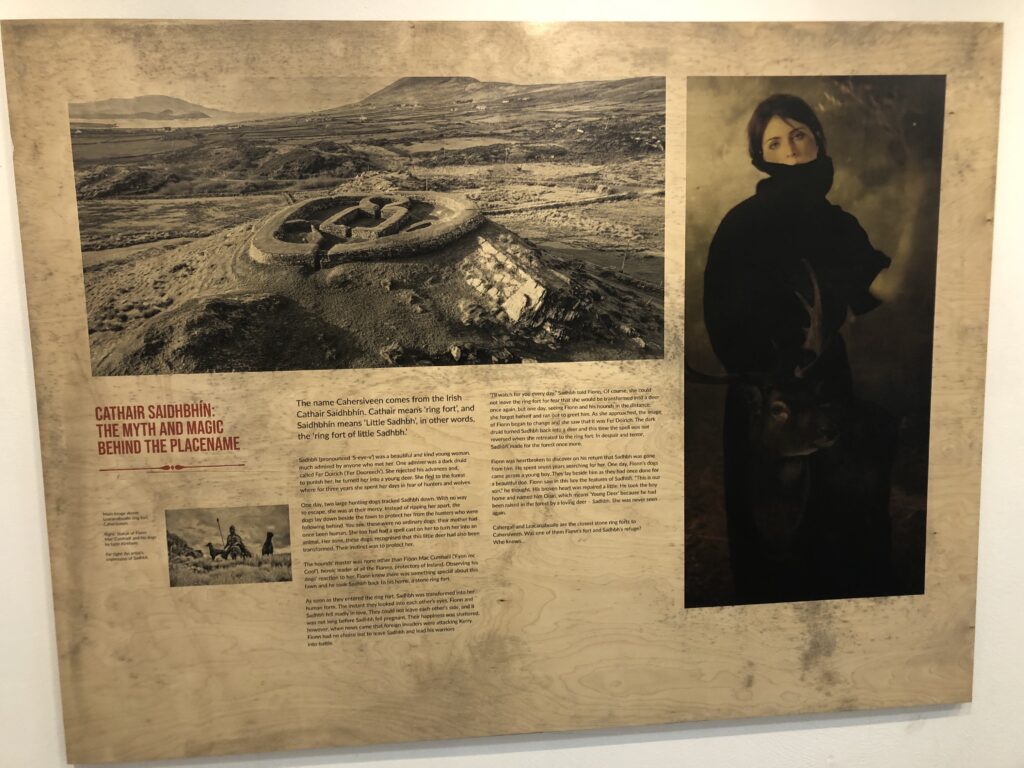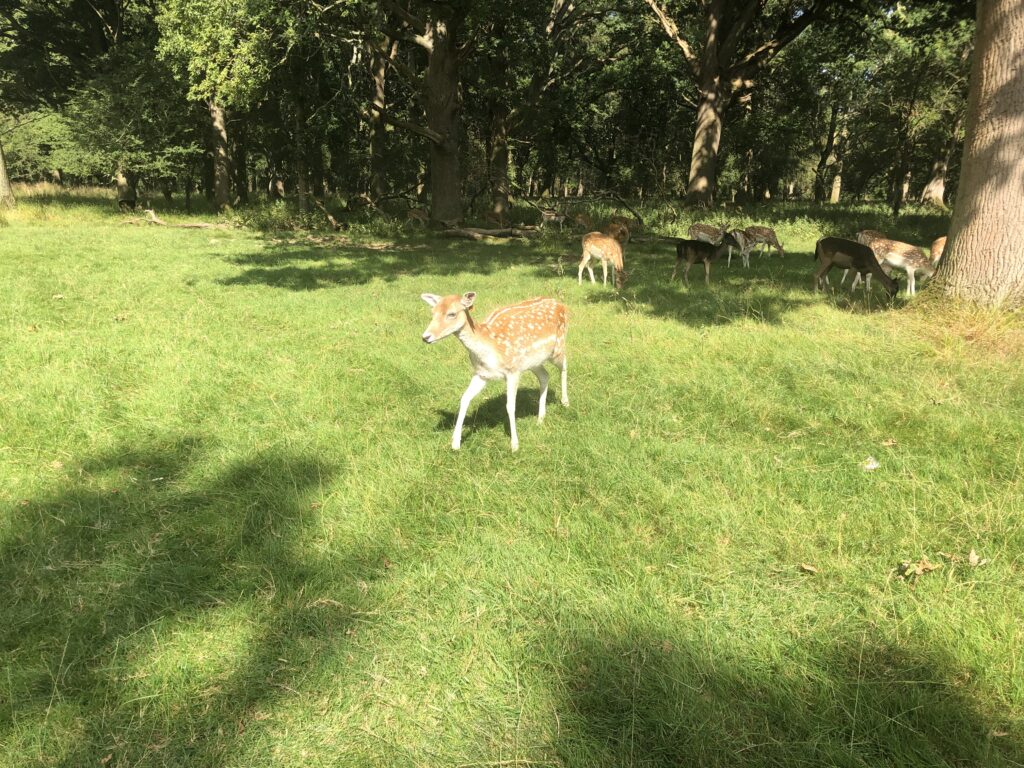In the world of psychotherapy, the concept of the fawn response has become crucial in understanding how we cope with trauma, particularly within the context of relational suffering. Coined by therapist Pete Walker in his 2013 book Complex PTSD: From Surviving to Thriving, the term “fawning” describes a survival mechanism where individuals appease others to avoid conflict or harm. However, recently I noticed some interesting parallels to that term and behaviour in our own ancient myths, where stories like the tragic Irish myth of Sadhbh offer powerful metaphors for the fawn response. As a therapist, I frequently see how myths and common experiences can align with the therapeutic process—demonstrating Jungian synchronicities, where disconnected events unexpectedly carry deep meaning. Let’s explore how I came to the conclusion that Sadhbh’s story parallels the fawn response, the risks it entails, and the possibilities for healing.
The Dark Myth of Sadhbh: A Story of Transformation, Survival, and Tragedy
The story of Sadhbh is one of Ireland’s darker myths, filled with themes of transformation and loss. Sadhbh, a woman of great beauty, is cursed by a druid after turning him down, transforming her into a deer. For years, she wanders the forests, estranged from her human life and loved ones. Her brief break from this comes when she meets the warrior Fionn mac Cumhaill, whose love actually allows her to regain her human form. However, this break is short-lived. The curse is reactivated, and Sadhbh is tragically turned back into a deer, ultimately leading to her death.
Sadhbh’s story is more than a tale of magic and tragedy—it’s a profound reflection of the psychological patterns that can emerge from trauma and relational suffering. It highlights the risk to life that can occur in a toxic, dangerous relationship. Just as Sadhbh is forced into a form not her own, the fawn response can force individuals into behaviours that betray their true selves. The ultimate self abandonment. And just as Sadhbh’s fate ends in tragedy, there are real risks when the fawn response is left unaddressed.
The Symbolism of the Deer: Divine Masculine and Feminine
In Celtic mythology, deer hold deep significance, representing both the divine masculine and divine feminine. The stag, with its majestic antlers, embodies strength, leadership, and protection—attributes of the divine masculine. The doe, graceful and nurturing, symbolises the divine feminine, embodying qualities of gentleness, intuition, and connection to the earth. Sadhbh’s transformation into a deer can be seen as a merging of these energies, yet her curse distorts this union, trapping her in a form that restricts her true expression.
This symbolic transformation resonates deeply with the fawn response, where one’s innate qualities are overshadowed by the need to survive, to appease, to become something that is not fully authentic. The divine qualities are still present but are constrained by the fear and trauma that drive the fawn response. Sadhbh’s story is a reminder of the risks of losing oneself, of allowing external forces to dictate our identity and actions.

My Journey: A Synchronicity with Sadhbh’s Story
Recently, I experienced a series of moments that brought Sadhbh’s story into my life in a way that felt deeply personal and mystical. It began with a simple yet profound encounter—a deer standing among a flock of sheep. At the time, I sensed it represented a message about belonging.
The following weekend, I found myself in Phoenix Park, surrounded by deer. This was unusual for me, as I rarely visit the park, but the experience felt almost orchestrated, as if the universe was trying to tell me something. Then, last week on a hike in Kerry, I spontaneously chose to listen to a podcast on Irish mythology. This was my first time ever listening to this podcast by the way! The story that played was Sadhbh’s—a tale I had never heard before, linked to the very town I was hiking in, Cahersiveen. The fact that this story involved a deer, and the synchronicity of hearing it at that precise moment, felt like a powerful message from the land, my ancestors, and my own psyche. I began to see these as reminders of my own tendencies to fawn, to blend in, and to lose myself in the needs and expectations of others—an ever-present reminder to be more balanced in my masculine and feminine energies
This moment of synchronicity became an “aha” moment for me, a profound connection to the messages of the land, my ancestry, and my own recent fawning behaviour. I realised how I had once again, been pulled back into old patterns, much like Sadhbh was drawn back into the curse. These patterns, often appearing as something new or shiny, were in fact the same old forces dressed up differently—like the druid in Sadhbh’s tale. They lure us back into familiar, yet damaging, behaviours, making it all too easy to forget our true selves.

The Risk of Losing Oneself: Sadhbh’s Warning
Sadhbh’s impulsive return to her deer form, running out into the world without caution, mirrors the way we can be drawn back into old habits and patterns, especially when we are not fully conscious of which of our parts are driving our behaviour. In my own life, I recognised how easy it is for me to fall into the fawn response—behaving in ways that please others but ultimately lead to a loss of self. We all have conditioned trauma responses, and this is one of mine. This story has reminded me of the importance of noticing these patterns, of giving myself the distance and space to see my behaviours clearly, and of not forgetting who I truly am.
Like Sadhbh, we can be tempted to run headlong into situations that seem familiar or comfortable, but which ultimately pull us away from our authentic selves. The tragedy of Sadhbh’s story serves as a cautionary tale—one that warns us of the dangers of allowing external forces or old patterns to dictate our actions and identities.
Finding Hope: Reclaiming the Self
Despite the darkness of Sadhbh’s tale, there are glimmers of hope, both in the myth and in modern psychotherapy. Sadhbh’s brief return to her human form symbolises the possibility of reconnecting with one’s true self. Similarly, individuals who have developed the fawn response can work toward healing and reclaiming their identity through therapy.
In therapy, the journey often begins with recognising and understanding the origins of the fawn response—acknowledging its role as a survival mechanism in the context of relational suffering and identifying the patterns that keep it alive. From there, the focus shifts to developing new ways of relating to oneself and others. This includes setting boundaries, practicing self-care, and cultivating self-worth. By doing so, clients can begin to transform their relationships and lives, moving away from survival mode and toward a more authentic existence.

Embracing Transformation and Healing
I am committed to helping clients navigate their journey from a place of survival to operate from a self led perspective. By listening, reflecting, and drawing connections—whether from ancient myths or modern psychology—I strive to provide the insights and support necessary for deep, meaningful healing. If any of this resonates with you, know that you are not alone, and that together, we can work toward a brighter, more authentic future.
The ancient myth of Sadhbh offers a powerful lens through which we can understand the modern psychological concept of the fawn response. This dark tale, with its themes of transformation and survival, echoes the struggles faced by many who have experienced trauma and relational suffering. But like Sadhbh, we are not destined to remain trapped by our past experiences. Through therapy, it is possible to break free from these patterns and reclaim our true selves.

0 Comments